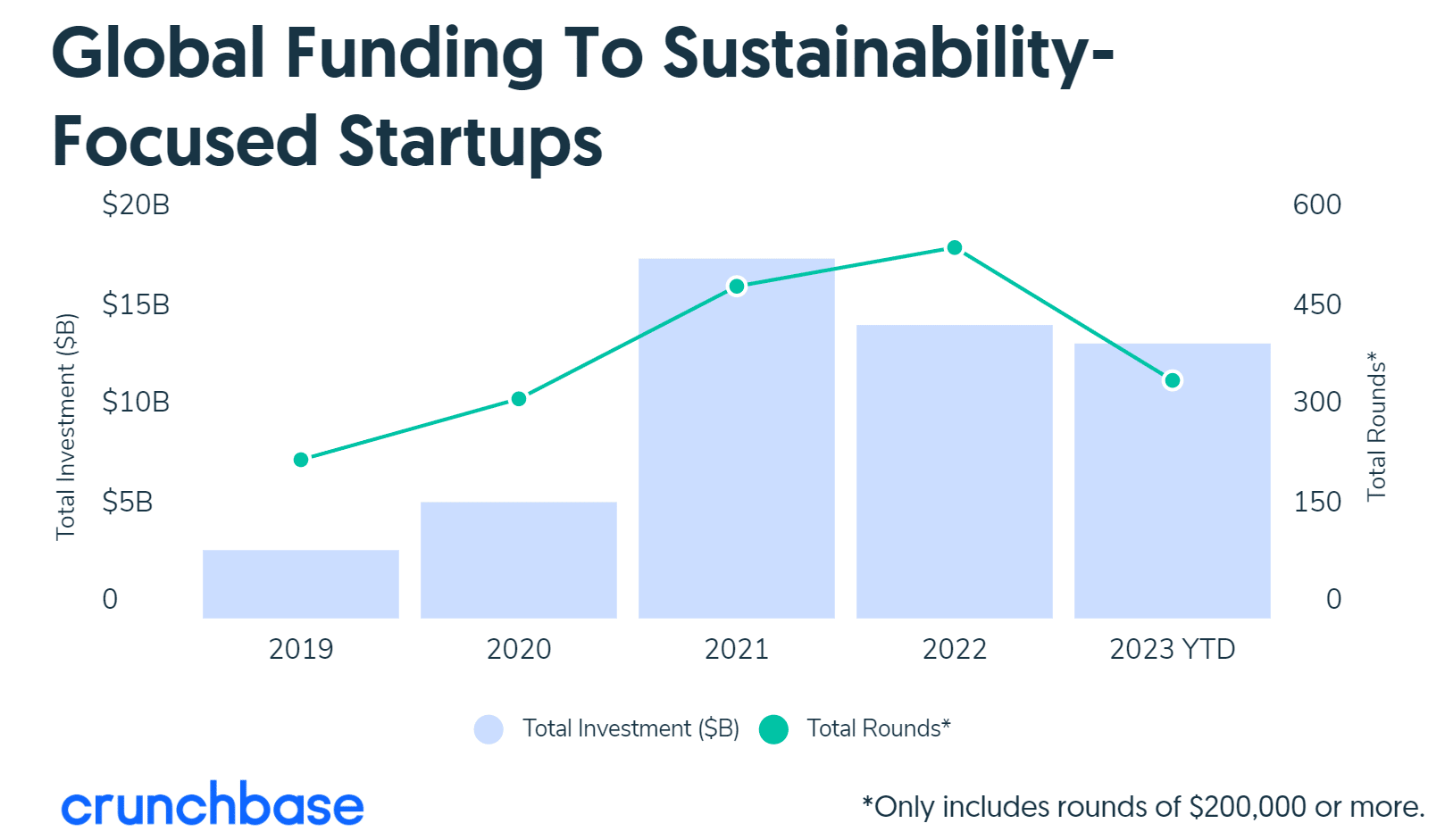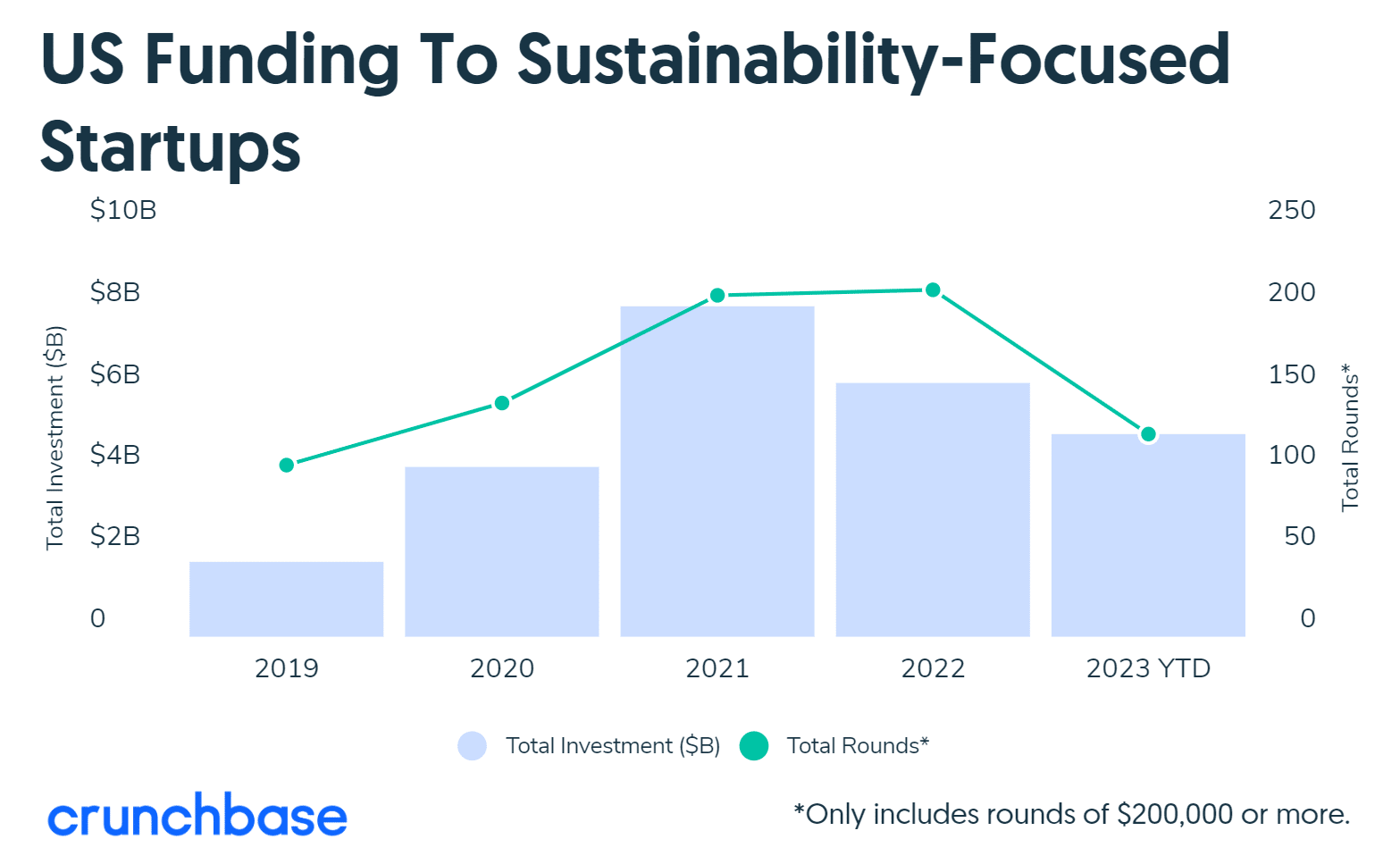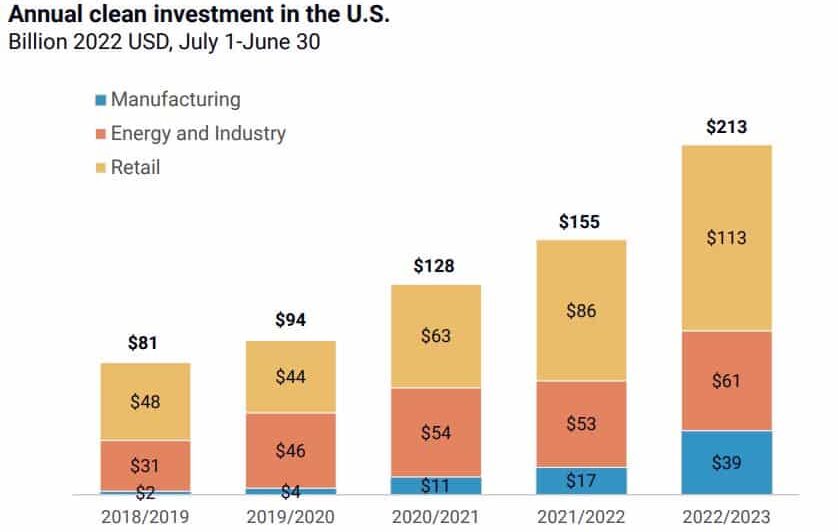In 2023, most startup investments went down, but areas focusing on clean technology and sustainability didn’t face as much of a decline.
According to data from Crunchbase, around $13.9 billion was invested globally this year in companies working on things like recycling batteries and developing crops that conserve water. This investment amount is similar to what was seen last year.
Riding the Sustainability Investment Wave
Their analysis looks at the funding for global sustainability in 2023 compared to the past 4 years. The chart above shows the total amount of investments in billion dollars and total number of rounds (363).
In the United States, funding specifically aimed at sustainability took a bigger step back this year, as shown below. However, investments in clean technology haven’t dropped as severely as in many other areas. And funds dedicated to this field are still actively supporting new projects.
The same trend was observed in VC funding for climate-tech startups specializing in carbon and emissions technology per PitchBook’s report. These companies received $7.6 billion in Q3 this year, exceeding the sector’s prior record by almost $2 billion.
Both funding trends defy the overall downward trend in fundraising.
Sectors That Got the Most Money
A lot of money this year went into supporting companies working on batteries. Specifically, companies in the battery space received the most significant amount of funding. Some of these companies even received $1 billion or more in financial support.
Several startups top the list with the most funding.
For instance, a French company focusing on making low-carbon batteries, Verkor, bagged over $2 billion through loans and investments. Another well-known company, Northvolt, producing lithium-ion batteries, raised over $1 billion via a convertible note. A battery recycling company based in Nevada, Redwood Materials, was able to attract $1 billion.
Apart from batteries, there’s also been a noticeable increase in interest towards capturing and storing carbon to combat climate change. This heightened investment is driven by alarming climate data suggesting severe consequences if atmospheric carbon levels continue to rise.
Numerous new companies aiming to remove and store CO₂ have received funding this year. Some of these startups are working on creating eco-friendly concrete to reduce the carbon emissions associated with its production. CarbonCure Technologies and C-Crete Technologies are popular examples.
Some companies are locking away CO₂ in soil and the oceans. Loam Bio and Charm Industrial, which both store carbon in soil, raised >$100 million each. Meanwhile, Ebb Carbon ($23M) and Captura ($12M) captured investors’ eyes with their innovative ocean-based removal technologies.
This surge in funding reflects the recognition that, despite the slow progress in adopting clean energy sources, there’s an urgent need for alternative solutions.
According to an IPCC report, strategies to limit global warming to 1.5°C often involve human-led efforts to remove carbon dioxide. And that’s despite the fact that these methods involve uncertain risks.
Alongside advancements in carbon capture, investments in climate-related software have continued. While there are fewer large-scale funding rounds exceeding $100 million compared to 2021 and 2022, there remains a steady flow of investments in software aimed at promoting sustainability.
Power Players in Climate Investment
In 2023, many of the most active investors in clean technology have become even more involved.
This is notable because a small group of investors focused on climate-related projects typically lead in terms of the number of deals they make and the total funding they provide. Familiar names in this sector, like Lowercarbon Capital, Temasek, TPG Rise Climate Fund, and Breakthrough Energy Ventures, have been particularly active.
In the U.S. alone, a new database tracking the country’s decarbonization journey, Clean Investment Monitor, reported that a total of $213 billion was invested in clean technologies and infrastructure from July 2022 to June 2023.
It seems unlikely that these investors will reduce their involvement in the following year. This is because urgent climate change forecasts strongly drive their investments, and these forecasts are becoming increasingly alarming. While this isn’t a positive thing, it does serve as a strong motivator for continued investment in climate-related efforts.





